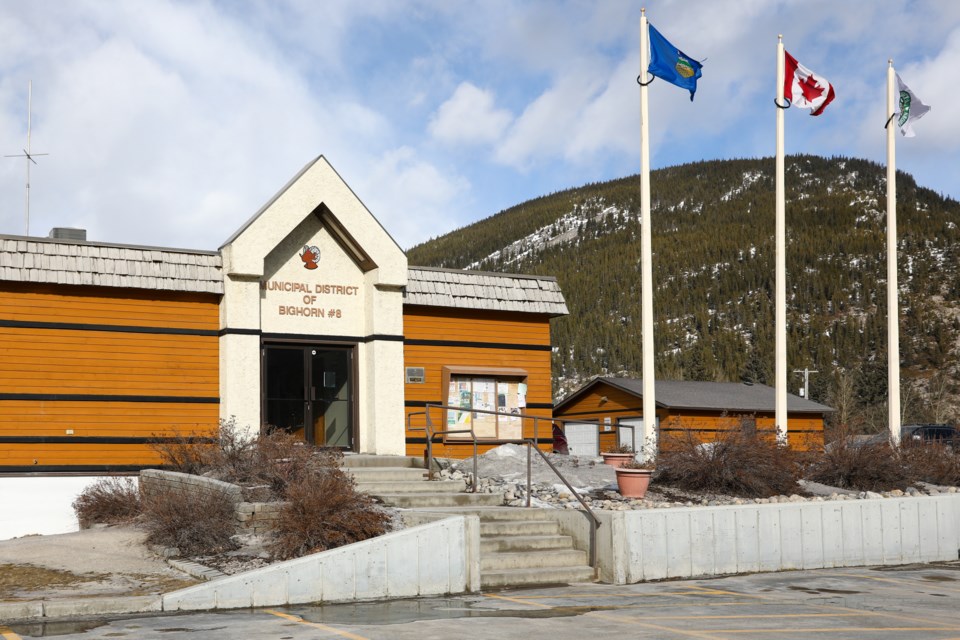MD OF BIGHORN – The MD of Bighorn is reviewing its level of service policy for fire services following a fire risk assessment presented to council in November last year.
Reviewing the MD’s policy with a level of service workshop, which was completed Jan. 31, was one of several recommendations made by Transitional Solutions Inc. in a previous presentation to council.
It was clear early in discussion at a Feb. 27 governance and priorities committee (GPC) meeting, however, that council representatives still have many questions.
“My hope is when we’re creating policy that the policy is very clear so that everybody understands if they’re not privy to the inter-workings of our [scope of services] that they will know what is actually happening in this policy, and it wasn’t clear to me,” said Reeve Lisa Rosvold, who had questions about service variances in what each of the three fire halls located in the MD provide.
Rosvold said she was under the impression the MD does not provide surface water and surface ice rescue at the technician level, as the policy level of service states.
It was clarified by municipal staff, however, that the service has always been included as part of policy.
“With the ice and water rescue, we currently provide those services out of the Exshaw Fire Department and have done for years,” said protective services director and fire chief Andrew Box.
Rosvold said she believes it should be made clear if one fire hall offers the service, but others don’t.
“Does that need to be clarified? Because that’s where I get confused,” she said.
Box noted that is covered in each fire department’s scope of services, which breaks down services per the Exshaw, Jamieson and Ghost fire departments. Those documents typically aren’t made public, he noted.
He pointed out the first page of the MD’s policy statement identifies that when a response is needed, the service level may be different based on various areas of the MD’s total 2,768 square kilometres. The policy covers all of Bighorn Emergency Services, instead of each individual fire department.
“There is no blanket level of service based on resources and personnel availability,” said Box.
The policy’s scope covers emergency response, structural fires, medical emergencies, dangerous goods, flammable liquid firefighting, rescue calls, disaster services response, mutual aid agreements and fire prevention.
The MD delivers protective services within its jurisdiction with a composite fire services organizational structure, comprised of full-time, casual and paid on-call volunteer firefighters. There is also a safety code officer who operates as a casual position.
“That is our current structure as of today. On Feb. 2, we hired a deputy [fire] chief, which is a full-time employee, I am a part-time employee with fire and our casual paid on-call firefighters make up the rest of the structure,” said Box.
Hiring a deputy fire chief was another recommendation of Transitional Solutions when it appeared in front of council and was included in the MD’s 2024 budget, in addition to hiring three full-time firefighters to fill a gap in staff deficiencies.
Addressing identified staffing vulnerabilities and having full-time firefighters in place Monday to Friday, it was suggested the MD would be in a better position to revisit its level of service and dispatch protocols with Canmore Fire-Rescue, which increased its fees to respond to geographically challenging areas for the fire hall in Exshaw, including Dead Man’s Flats, Lac Des Arcs and Harvie Heights, by 109 per cent from 2017 to 2022.
The MD’s policy additionally states “that an emergency response cannot be guaranteed for each and every emergency incident that arises; due to limited resources the municipality can expend on fire protection services, and the difficulty in ensuring that staff will be available in sufficient number and with sufficient training on a 24-hours basis, to response to every call for assistance received in a timely and safe manner.”
Coun. Jen Smith said she had many questions about the policy, but felt it a better use of MD staff’s time to compile those with other committee member’s questions and have the discussion return to GPC at its next meeting.
“It’s one of those things where you’re developing a policy and we’re getting the bones of it down right now and we’ll flesh out some of the details … The policy’s always going to change, so we need somewhere to start. I think if we can help you get through your questions, it’ll move forward that much quicker,” said Coun. Rick Tuza.
The next GPC meeting is March 26.
The Local Journalism Initiative is funded by the Government of Canada. The position covers Îyârhe (Stoney) Nakoda First Nation and Kananaskis Country.



